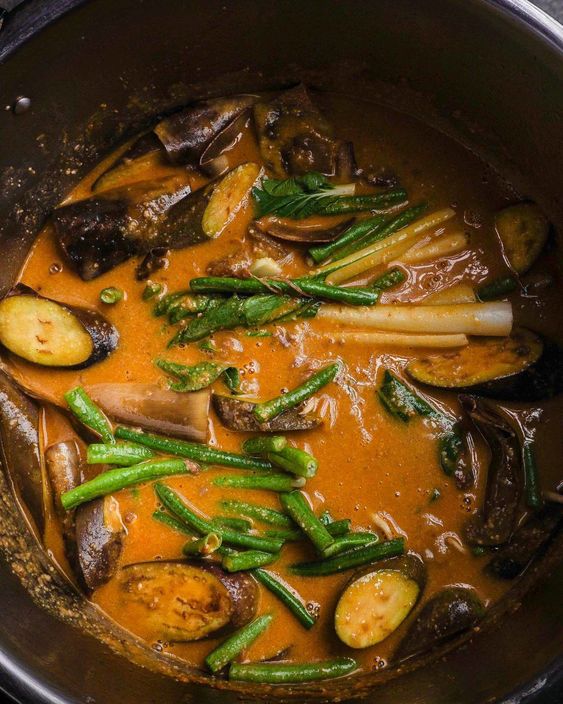Authentic Filipino Food Recipes to Try in your home
Discovering authentic Filipino food dishes offers an opportunity to appreciate the detailed tastes and cultural importance behind each recipe. Utilizing fresh, local active ingredients is necessary, as is accepting communal eating-- a characteristic of Filipino society.
Popular Filipino Dishes
Filipino cuisine flaunts a rich tapestry of flavors and customs, with over a dozen famous recipes that highlight the nation's diverse social influences. One of the most well-known dishes is Adobo, a mouthwatering stew generally made with chicken or pork, marinated in vinegar, soy sauce, garlic, and flavors. Its tangy taste account makes it a staple in Filipino families.
Another precious meal is Sinigang, a sour soup typically made with tamarind, tomatoes, and various veggies. This recipe can feature pork, shrimp, or fish, and its refreshing taste is perfect for cozy climates. For those with a sweet tooth, Leche Flan-- a creamy sugar custard-- functions as a preferred treat, showcasing the Filipino penchant for abundant, wonderful flavors.
Kare-Kare, a passionate oxtail stew with a thick peanut sauce, in addition to the iconic lumpia, or springtime rolls, even more exhibit the range found in Filipino food. Each dish not only supplies one-of-a-kind tastes however also narrates of regional active ingredients and historic impacts, making Filipino food a vibrant representation of its culture and heritage.
Important Components for Filipino Cooking
The essence of Filipino food preparation lies in its crucial ingredients, which work as the structure for the nation's beloved recipes. A selection of tastes and textures come with each other, showcasing the varied social impacts that shape Filipino food.
Trick active ingredients include rice, the staple that accompanies virtually every meal, signifying sustenance and community. Soy sauce, vinegar, and fish sauce (patis) are important for seasoning, conveying umami and deepness to recipes. Fresh herbs like cilantro and basil include fragrant quality, while garlic, onion, and ginger offer a robust flavor base.
Protein sources such as pork, poultry, and seafood are central to many recipes, commonly marinaded to boost preference. Veggies like eggplant, bitter melon, and eco-friendly beans contribute crucial nutrients and equilibrium - Filipino food recipes. Coconut milk is an additional significant ingredient, providing creaminess and a refined sweet taste to numerous stews and treats
Last but not least, calamansi, a citrus fruit, offers a rejuvenating flavor that boosts recipes and beverages alike. Together, these ingredients produce the dynamic and rich tapestry of flavors that specify Filipino food, making it both comforting and unique. Recognizing these principles is vital for any person wanting to replicate authentic Filipino dishes at home.
Step-by-Step Recipe Guide

Start by preparing your components. For Adobo, slice the meat into consistent pieces and marinade it in soy sauce, vinegar, garlic, and bay leaves for at least thirty minutes. Next, warm oil in a pan and sauté the garlic and onions until fragrant, after that include the seasoned meat, allowing it to brown equally.
For Sinigang, begin by boiling water in a pot and including your choice of meat. When tender, incorporate tamarind paste or fresh tamarind for that signature sour taste. Adhere to with veggies like radish and kangkong, cooking up until simply tender.
:max_bytes(150000):strip_icc()/265040-Filipino-Beef-Giniling-Pamela-Leyva-1x1-1-6f5eefd058da41bdb609059b253ea76d.jpg)
Tips for Genuine Flavor
Often, accomplishing genuine taste in Filipino dishes rests on the cautious selection and therapy of components. Begin with fresh, top quality produce, as the vibrancy of vegetables and herbs dramatically improves the dish's general taste. Staples like garlic, onions, and ginger form the fragrant foundation for numerous dishes; using them in proper proportions click site is important.
Choosing the appropriate healthy protein is similarly important. As an example, traditional adobo frequently utilizes hen or pork, seasoned to soak up the marinade's complete taste. In addition, consider sourcing in your area created or local components, as they can offer authenticity that store-bought choices do not have.
Food preparation techniques likewise play a vital duty. Slow-cooking techniques, such as braising or stewing, enable tastes to blend perfectly, while frying can add a rewarding appearance. Don't overlook spices; making use of salt, fish sauce, or soy sauce at the right moments can elevate a recipe significantly.
Serving and Taking Pleasure In Filipino Food
Culinary experiences are enhanced when Filipino food is offered with focus to custom and community. The method of sharing meals is main to Filipino culture, representing unity and friendliness. When serving Filipino dishes, think about utilizing standard serveware, such as clay pots or bamboo baskets, which enhance the credibility of the experience.
Typically, Filipino meals are enjoyed family-style, with a variety of dishes placed at the center of the table. This common method encourages interaction and permits guests to sample various tastes. A well-curated spread might include staples like adobo, sinigang, and lumpia, enhanced by rice, which is a check this basic part of every dish.
Accompanying the food with traditional condiments, such as soy sauce, vinegar, or chili paste, can elevate the dining experience, inviting restaurants to tailor their plates to their choices. Additionally, incorporating neighborhood drinks, like calamansi juice or tuba, can improve the total flavor account.
Verdict

Comments on “The Top Filipino Food Recipes for Your Kitchen.”